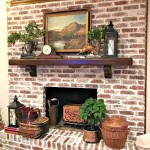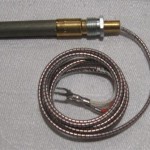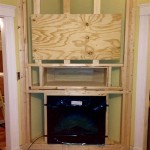Shallow Gas Fireplace Insert: A Comprehensive Guide
A shallow gas fireplace insert is a self-contained heating appliance designed to be installed directly into an existing fireplace opening. Unlike traditional wood-burning fireplaces, gas inserts offer a convenient and efficient alternative, providing warmth at the push of a button. Shallow models are specifically engineered for fireplaces with limited depth, addressing the common challenge of fitting a modern insert into older or smaller fireplace cavities.
The primary function of a gas fireplace insert is to convert an underutilized or inefficient masonry fireplace into a reliable and controllable heat source. They operate by burning natural gas or propane, generating heat that is then distributed into the room via convection, radiant heat, and sometimes, a blower system. The aesthetic appeal is also a significant factor, as these inserts offer a visually pleasing flame display, often mimicking the look of a traditional wood fire with realistic logs, glass media, or decorative stones.
Choosing the right gas fireplace insert, particularly a shallow model, requires careful consideration of several factors, including the existing fireplace dimensions, the desired heat output, fuel type, and aesthetic preferences. Understanding the specific features and benefits of shallow gas inserts is crucial for making an informed decision that meets both functional and aesthetic needs.
Key Considerations for Shallow Gas Fireplace Inserts
Selecting a shallow gas fireplace insert requires meticulous attention to detail. Several key factors must be considered to ensure compatibility and optimal performance within the existing fireplace structure.
Fireplace Dimensions and Clearance
The depth, width, and height of the existing fireplace opening are paramount. Shallow gas inserts are designed to fit into narrower fireplaces, but precise measurements are still necessary. It is imperative to measure the fireplace opening accurately and compare these dimensions with the manufacturer's specifications for the insert. Insufficient clearance can lead to installation difficulties or even prevent the insert from fitting properly. In addition to the opening itself, consider the depth of the firebox and the presence of any obstructions that might interfere with the insert's placement. Professional installation often includes minor modifications to the firebox to ensure a proper fit and adherence to safety regulations. Adequate clearance is not only essential for physical installation, but also for proper ventilation and heat dissipation, preventing overheating and potential fire hazards.
Heating Capacity and Efficiency
The heating capacity of a gas fireplace insert is measured in British Thermal Units (BTUs). The appropriate BTU rating depends on the size of the room being heated and the climate. A larger room or colder climate necessitates a higher BTU output. It is crucial to accurately assess the heating needs of the space to avoid purchasing an insert that is either underpowered or overpowered. An underpowered insert will struggle to adequately heat the room, while an overpowered unit may lead to discomfort from excessive heat and potentially increase fuel consumption. Energy efficiency is another vital aspect. Look for inserts with high efficiency ratings, typically expressed as a percentage. More efficient models convert a greater portion of the fuel into usable heat, reducing energy waste and lowering heating bills. Consider inserts with features like programmable thermostats and remote controls, which allow for precise temperature management and further optimization of energy consumption.
Fuel Type: Natural Gas vs. Propane
The choice between natural gas and propane depends largely on the availability of each fuel source at the installation location. Natural gas is typically supplied through a municipal pipeline, making it a convenient option for homes already connected to the gas grid. Propane, on the other hand, is stored in a tank, making it suitable for homes that are not connected to a natural gas line. Each fuel has its pros and cons. Natural gas is generally less expensive than propane, but the installation cost can be higher if a gas line needs to be run to the fireplace. Propane offers greater flexibility in terms of installation location, but requires periodic tank refills or a larger storage tank installation. The BTU output of a gas insert may also vary slightly depending on whether it is fueled by natural gas or propane. It is important to verify the manufacturer's specifications for each fuel type to ensure the insert meets the desired heating needs.
Benefits of Choosing a Shallow Gas Fireplace Insert
Selecting a shallow gas fireplace insert offers several advantages, particularly for homeowners with limited fireplace cavity space.
Space-Saving Design
The primary benefit of a shallow gas fireplace insert lies in its compact design. These inserts are specifically engineered to fit into fireplaces with limited depth, making them ideal for older homes or smaller fireplace openings where conventional inserts might not be suitable. This space-saving design allows homeowners to enjoy the benefits of a gas fireplace without the need for extensive renovations or modifications to the existing structure. The reduced depth also minimizes the protrusion of the insert into the room, preserving valuable floor space and maintaining the aesthetic integrity of the fireplace surround. The shallow profile doesn't compromise heating efficiency or aesthetic appeal, providing a functional and visually pleasing heating solution for space-constrained environments.
Improved Energy Efficiency
Gas fireplace inserts, including shallow models, offer significantly improved energy efficiency compared to traditional wood-burning fireplaces. Traditional fireplaces often lose a substantial amount of heat up the chimney, rendering them inefficient heating sources. Gas inserts, however, are designed to contain and direct heat into the room, minimizing heat loss and maximizing energy utilization. Many shallow gas inserts are equipped with features like sealed combustion systems, which draw air from outside the home for combustion, preventing heat from escaping up the chimney and reducing drafts. Programmable thermostats and remote controls further enhance energy efficiency by allowing homeowners to precisely control the temperature and heating schedule. The combination of these features results in lower heating bills and a smaller environmental footprint.
Convenience and Ease of Use
Gas fireplace inserts offer unparalleled convenience and ease of use compared to wood-burning fireplaces. The need for manually loading wood, tending to the fire, and cleaning up ashes is eliminated. With a gas insert, starting and stopping the fire is as simple as pressing a button on a remote control or adjusting a thermostat. Many models offer features like automatic ignition, adjustable flame height, and programmable timers, providing customized heating and ambiance. The absence of wood storage and ash disposal also contributes to a cleaner and more convenient heating experience. The ease of use makes gas fireplace inserts an attractive alternative for homeowners seeking a hassle-free and efficient heating solution. The reduced maintenance requirements, coupled with the instant heat and adjustable flame settings, make gas inserts a convenient and appealing option for both primary and supplemental heating.
Installation and Maintenance Considerations
Proper installation and regular maintenance are crucial for ensuring the safe and efficient operation of a shallow gas fireplace insert.
Professional Installation
Gas fireplace insert installation should always be performed by a qualified and licensed professional. This ensures compliance with local building codes and safety regulations. A professional installer will assess the existing fireplace structure, install the gas line (if necessary), connect the venting system, and ensure the insert is properly sealed and functioning correctly. Improper installation can lead to gas leaks, carbon monoxide poisoning, or fire hazards. A professional will also conduct a thorough inspection of the installed insert to verify that all components are operating safely and efficiently. Moreover, a professional installation may be required to maintain the manufacturer's warranty.
Regular Maintenance
Regular maintenance is essential for maintaining the performance and longevity of a gas fireplace insert. This includes cleaning the glass front, inspecting the burner assembly, checking the venting system, and testing the safety features, such as the carbon monoxide detector. The frequency of maintenance will depend on the usage of the insert and the manufacturer's recommendations. It is advisable to schedule an annual inspection and cleaning by a qualified technician. This professional maintenance can identify potential problems early on and prevent costly repairs. Regular cleaning of the glass front will also maintain the aesthetic appeal of the insert, ensuring a clear and unobstructed view of the flames. Neglecting maintenance can lead to reduced efficiency, increased fuel consumption, and potential safety hazards.
Safety Precautions
Safety should be a top priority when operating a gas fireplace insert. It is imperative to follow all safety instructions provided by the manufacturer. Ensure that the area around the fireplace is clear of flammable materials. Never use the fireplace as a drying rack for clothing or other items. Install and maintain a working carbon monoxide detector in the vicinity of the fireplace. Periodically inspect the gas line and venting system for leaks or damage. If you suspect a gas leak, immediately turn off the gas supply and contact a qualified technician. Regular maintenance and adherence to safety precautions will ensure the safe and reliable operation of the gas fireplace insert.

Zero Clearance Fireplaces Valor Gas

The Langley Gas Fireplace 36l Shallow Linear

Fire Ribbon Direct Vent Slim Gas Fireplace Spark Modern Fires

Fire Ribbon Direct Vent Slim Gas Fireplace Spark Modern Fires

Zero Clearance Fireplaces Valor Gas

Timberwolf Tdi3n Gas Burning Fireplace Insert

Fire Ribbon Direct Vent Slim Gas Fireplace Spark Modern Fires

Majestic Quartz 32 Direct Vent Gas Fireplace Warming Trends
.aspx?strip=all)
Top 11 Gas Fireplace Insert Trends Of 2024

The Langley Gas Fireplace 36l Shallow Linear
Related Posts








